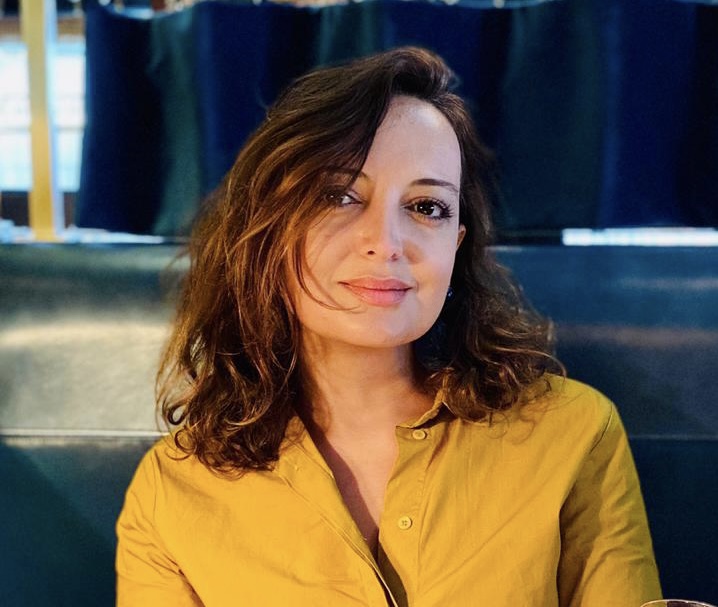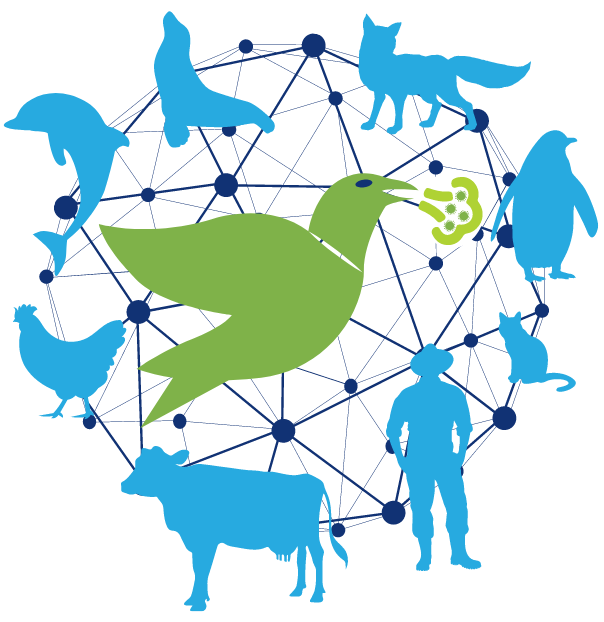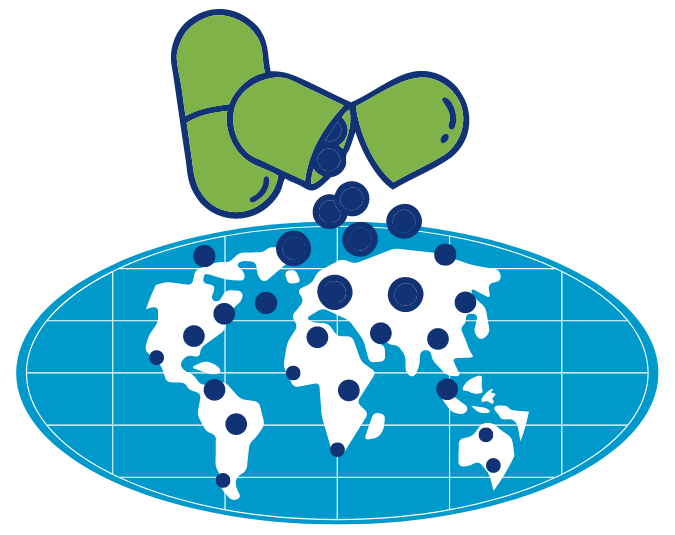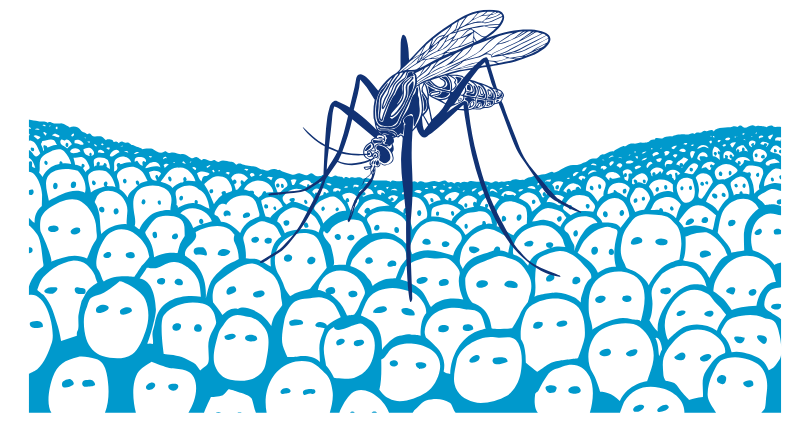
Can a picture lie? They can and do – especially when they are used out of context. And photographs and other imagery are regularly abused when it comes to illustrating global health. Available images illustrating disease outbreaks, refugee needs, and even benign public health campaigns routinely show Black and Brown people far more often than they do light-skinned residents of wealthy Western nations. Misery is almost always associated with color.
Dr. Esmita Charani of the University of Liverpool and of the Division of Infectious Diseases and HIV Medicine at the University of Cape Town, tired of seeing this, did something about it. She and colleagues got the hard data about how public health imagery over-represents the global South. Her work got some attention and sparked some action. The Lancet is now changing the way it uses those images.
In this episode of One World, One Health, host Maggie Fox chats with Esmita about how this imbalance happened in the first place, how it’s harmful, and what can be done about it.
Maggie Fox (0:01)
Hello and welcome to One World One Health with the latest ideas to improve the health of our planet and its people. I’m Maggie Fox.
Planet Earth faces challenges including pollution, climate change, and new and reemerging infectious diseases. And they’re all linked. This podcast is brought to you by the One Health Trust with byte-sized insights into ways to help.
A picture is worth 1000 words, and often, especially in the world of global health, they can distort people’s views. In this episode, we’re taking a look at how photographs and other images that are used in global health might not always achieve the intended effect we’re chatting with Dr. Esmita Charani of the University of Liverpool and the Division of infectious diseases in HIV medicine at the University of Cape Town in South Africa.
Esmita, thank you so much for taking the time with us today.
Esmita Charani (0:55)
My pleasure. Thanks for having me on this program.
Maggie Fox (0:57)
Esmita, we’ve all seen pictures of emaciated children being weighed in scales of women clutching their babies to their chests. Can you describe some of the images that people may remember, especially clearly?
Esmita Charani (1:11)
So we use images a lot, particularly in global health. And there is a tendency, we have noticed over time, in our own experience to depict people from the global south through a particular lens. And I mean, the most well-known image if you like, which isn’t actually from global health. It’s a journalism image of Steve McMurray’s photograph of Sharbat Gula: the Afghan refugee girl whose photograph made the career of Steve McMurray and was a very, everybody saw a beautiful photo at the time.
Maggie Fox (1:49)
And this is the photograph of the refugee with the beautiful green eyes. Her face is amazing. And she has a look of desperation on her face.
Esmita Charani (1:57)
Yeah. And it was featured on the cover of National Geographic, and it’s become a very iconic image from the war in Afghanistan. But when the reporters look back to find her and tell her story, they realized actually there was another story behind the image that she was taken out of her classroom to have this photograph taken by a foreign man or photographer and actually the anger and that emotion we see in the photograph is her not wanting to be there and not having her photograph, take her. And so this is the issue of consent of telling people what we do with their images and how we depict people without telling their stories or narrating a story that is different from the reality. So that’s an extreme example, and I use that example because it is well known. And I think most of the listeners will have by now realized which image I’m talking about.
But within Global Health, through our practices over time, we have seen a consistent use of inappropriate and intrusive images of people, particularly if they happen to be funded global south of people of color, people in low and middle-income countries, depicted in situations in environments that often would not be allowed if those individuals were in the global law, for example of children in hospital beds, the strength of patients receiving care, of being examined by doctors, and those images appearing in reports, by NGOs, by global health organizations to promote the work that they do. And that is what is of concern to us and led us to do the work that we undertook.
Maggie Fox (3:37)
And it’s almost as if people are being used as props.
Esmita Charani (3:41)
Precisely. And people are being used without due consideration for their dignity for their privacy and for being given or there being any evidence of consent of the images of people being used; private citizens and private individuals whose images are being used to promote the work of NGOs and healthcare organizations. And one of the stark differences, if you take notice, next time you open up for the global health report or publication, if you look at the way we depict people from different parts of the world, when we try to present an environment that is from the global north from a high-income country, often it is staged, it is a very sterile environment and actors are used. But when we try to depict the same from low and middle-income countries, it is often people in real life situations, vulnerable in vulnerable situations and without due consideration for consent and privacy. And it’s that stark difference in representation of people based on where they are from, which is problematic.
Maggie Fox (4:45)
Now, you can say that photographs don’t lie, but they don’t necessarily tell the whole truth either. How can something like a photograph or an image distort how people view other people?
Esmita Charani (4:57)
In global health particularly in the area where we work, in infectious diseases, there is a lot of association of diseases with particular groups of people and photographs have a powerful means to perpetuate that and lead to stigmatization and othering of disease, an association of specific populations with specific socio-economic and socio-cultural problems and diseases. And that is something that we do not advocate for, which we think is inappropriate, and it perpetuates coloniality and also stigma and racism, and bias in our practices.
And another way to look at it, another example I can give you is if you look at the imagery using vaccination often is people in pain, suffering in distress. And that gives a negative image of vaccines, which are life-saving interventions that actually do a lot of good. So we have to be very careful, particularly in the field of global health, when we are trying to communicate about disease and health and well-being, how we select the images, and what those images are telling the audience.
Maggie Fox (6:06)
You and your colleagues recently wrote a paper published by the Lancet looking at this problem; what did you find? And how did you describe it?
Esmita Charani (6:13)
So we were triggered to do this research based on our own experiences in global health, inconsistent use and inappropriate use of imagery. And one particular example that led us to do this work was a major global health organization, which had invited us to put together a presentation for colleagues in East Africa. And when our slides set what came back to us, the organization had put their “branding”, as they call it on the slides. And they had used images that had no relevance to the topic that we were discussing. There were images of black women going to church in traditional quotes, and I questioned if there would be organization and I said, you know, if I was talking about this topic, which was antibiotic prescribing, and behavior change to a European audience, I wouldn’t use a group of nuns going to church. Where is the relevance here? and how appropriate is it for me as an outsider to go to a group of colleagues in East Africa and use images to talk about subjects I’m talking about?
And we had a lot of pushback from the organization, who stated that this was the stock images that they use in global health and they didn’t see anything wrong with it. So we decided to go away. I presented this work in one of the lectures I gave to a group of medical students at Imperial College in London. And we discuss the issues around this and the biases of representation. And we decided to actually conduct a study to look at how imagery is used in global health. And we sought out the major players in infectious diseases in global health because global health is very broad. And we identified 14 Global Health actors, who predominantly are based in high-income countries that operate in low income countries. And we decided to look at the imagery of people that is used in public-facing publications of these organizations. And when we looked at this, we identified over 100 individual publications from 14 global health factors. And within those, there were over 800 images of individuals and people.
And we described through a process of consensus, we developed a framework because what we identified is actually there is no guiding framework, there was nothing to guide organizations and individuals in how they represent people within global health. So we have to go and look at where there were guidelines in photographers without borders and concord guidelines in Europe for representation of people in photography, and we developed our own framework to analyze these images.
Maggie Fox (8:38)
In your study, what are some of the things that you found?
Esmita Charani (8:41)
So we looked at over 100 publications that are openly available through 14 Global Health actors, and one of the key findings was the inequitable way in which people of color are represented, particularly women and children of color from different parts of the world. And we saw an over-representation of imagery of children in global health publications, often with no direct relevance or context to the content of the report.
These children were often depicted in vulnerable situations without a parent or guardian present, and hardly ever did we see any evidence of consent. And this is something that is of major concern to us because I work in the National Health Service in the UK and as part of my work if I ever went to a hospital and took a photograph of a child, this is a complete breach of medical practice, and I will probably lose my license.
So there are very strict guidelines on how we represent patients in the work that we do. And what we are seeing is a lapse of adherence to these guidelines when people cross boundaries into different parts of the world. And what we’re advocating for is that regardless of geography, race, gender, and ethnicity, people are given the same level of respect and dignity in representation.
Maggie Fox (9:58)
I can see how the problem has been amplified. When you look for, let’s say, a picture of somebody with smallpox or somebody with measles, because of the rules in the Global North, you can’t go into hospitals and take pictures of these kids. You end up with a picture of somebody, some little kid in Africa or Southeast Asia or Latin America, that’s 40, or 50, or 60 years old.
Esmita Charani (10:22)
Precisely. And most recently, with the monkeypox outbreak that was predominantly in the Global North, we saw a lot of images of black skin being used to depict the manifestations of a disease. And again, that is an example of where we are not adhering to the same ethical standards when we cross boundaries. And this is something that needs to be changed.
Maggie Fox (10:47)
And many of these images are probably being used with the best of intentions. People don’t mean to do harm.
Esmita Charani (10:54)
Absolutely. And what was lacking and what we have added to this environment to this debate is a framework to guide the appropriate and equitable use of imagery that depicts individuals with the same respect and dignity and right to consent, regardless of where they are from the world, regardless of their ethnicity or skin color.
There’s been a lot of controversy recently about images of people in vulnerable states being used or ending up on stock image libraries. And these are individuals who have been treated by global health organizations. And what we want to advocate for is to prevent this kind of practice. And this requires a concerted effort not only from those who operate within global health, but those who interact with global health organizations to produce these images and to reuse these images.
So we hope this framework that we have developed, will be adopted and applied, so that we can carry on using imagery, which is very powerful in depicting the problem and finding solutions to those problems. But this is done in a way that respects the dignity and the primacy of individuals whose images were used.
Maggie Fox (12:03)
Esmita, I know as an editor, one of the problems is this accessibility to the pictures, stock photos, as you say. People don’t have access to these freely available images that don’t have copyright protections.
Esmita Charani (12:18)
Absolutely. And what we are saying, so the next stage of our work is going to be to engage with global health activists with photographers who operate in global health, to develop a mechanism for possibly recommissioning the images that we use in global health. And it has been really wonderful today, the Lancet Global Health editors have published in response to our paper, a pledge to change and recommission images across all of their journals. And that takes into consideration some of the points that we have raised in our framework.
And this is a huge step forward. And we’re very delighted to see this kind of change happening. And this is what we want from the global health organizations as well is in having a framework that they can apply consistently to how they represent people who are beneficiaries of the services and also the work that is being done through these organizations.
Maggie Fox (13:10)
So the Lancet, a major medical journal has responded to your study by changing the way they use images and coming up, tell us again, if they’ve come up with a framework.
Esmita Charani (13:22)
They are going to develop. They’re going to develop a framework within all of their Lancet journals, a whole family of Lancet journals. And this was written in north of global health, published today by the editor and an editorial in response to the concerns that we raised and the framework that we have developed in how we depict people in global health. And this is a fantastic step forward.
Maggie Fox (13:45)
This is so interesting. I’m so glad that you did this study. It’s something that’s bothered me for years, and I never was able to put my finger on a solution. And you’ve come up with a solution.
Esmita Charani (13:57)
Thank you. And the reception to just work has been really heartening to us. We’ve had photographers whose photos we’ve featured in the work approach us and tell us about the challenges that they face. We’ve had NGOs and global health organizations come to us. And lastly, this move by the Lancet is really fantastic. And that we’re very pleased to see that this work is leading to real change in this field. Thank you
Maggie Fox (14:19)
Esmita thank you so much for taking the time to chat with us about this.
Esmita Charani (14:24)
My pleasure. Thank you for having me.
Maggie Fox (14:27)
Listeners can share this podcast which is brought to you by the One Health Trust by email, LinkedIn or your favorite social media platform.
And let us know what else you’d like to hear about at [email protected]. Thanks for listening.
Guest

Dr. Esmita Charani is an honorary Associate Professor at the University of Cape Town, where she is undertaking a Wellcome Trust Fellowship investigating intersectionality and AMR. In the UK, she is a Reader in AMR and Global Health at the University of Liverpool. She is a visiting Researcher at Haukeland University Hospital, Bergen Norway, and Adjunct Professor at Amrita Institute of Medical Sciences, Kerala India, where she is involved in helping implement and investigate national antibiotic stewardship programs. Her work in AMR has been recognized through the Academy of Medical Sciences UK-India AMR Visiting Professor award. She is an expert advisor to the Commonwealth Pharmacy Association and a Global Health Fellow with the Office of Chief Pharmaceutical Officer, England. She is involved in mentoring and supporting clinical pharmacists across different healthcare settings and economies in implementing antimicrobial stewardship interventions. Her doctoral thesis investigated antimicrobial stewardship across India, Norway, France, Burkina Faso, and England.
Credits
Hosted and written by Maggie Fox
Special guest: Esmita Charani
Produced and edited by Samantha Serrano
Music composed and sound edited by Raquel Krügel
Transcript by Harsh Pingle







